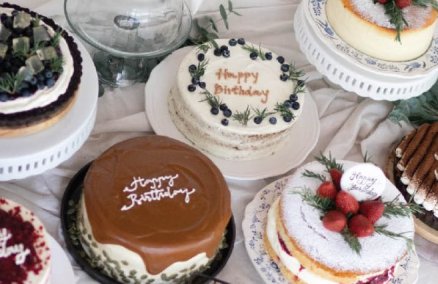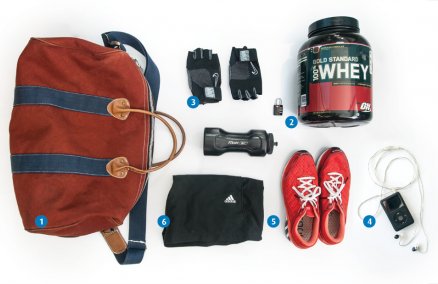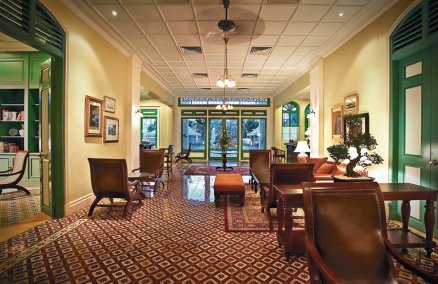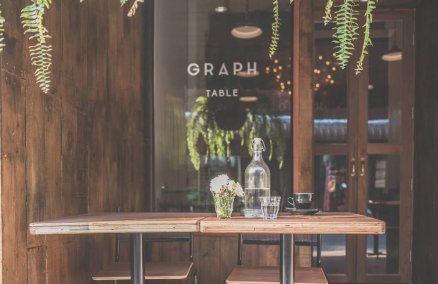How it Feels to Live with More than 30 Cats (And Three Dogs)
Christabel Chai is just crazy about cats. She hasn’t done a headcount recently, but there’s a lot of pussies lying around her house. She didn’t always plan to have so many living with her. It started about 10 years ago when she was feeding, sterilizing and vaccinating the strays in her area. The sterilizations were obtained free from the SPCA with vouchers and later with the help of the Cat Welfare Society, but the vaccinations were paid for out of her own pocket.
When stray cats were being culled during the SARS period about three years ago, for Chai, the next natural step was to take these cats home. “Otherwise, if they ended up being put down it would have been a waste of my time and effort sterilizing and vaccinating,” she says. “I know a lot of people who did the same thing.”
Chai’s home is set up to be cat proof. All the windows are with grilles so the cats can’t escape and are secure. She has cat cages, baskets, toys and food bowls stacked up all around the walls. And there’s a special caged section for the kittens she is raising until they can be rehoused elsewhere. All the cats are kept separate from the dogs who live outdoors in various sections of the yard.
Every one of the animals has a name and Chai knows them all. When asked how she can keep track of every feline, Chai answers: “I guess it’s like if I had more than 30 babies. I would just be able to remember.” But when asked which is her favorite, Chai is very diplomatic. “It’s quite difficult for me to pick a favorite with so many. It wouldn’t be fair.”
How it Feels to Be HIV Positive
Kym (not his real name) is a gay man in his mid-30s. About three years ago, during a routine annual medical check, he was diagnosed as being HIV positive. After the test he was immediately told of his diagnosis. He says he felt as any normal person would about the results: He was devastated. “But as time goes by, I have slowly accepted and learned how to deal with it,” he comments. This type of resigned attitude seems to be how Kym faces every part of his life that has been impacted by HIV. Kym hasn’t told his family or friends about his HIV status and he has no plan to do so. He reasons that there’s no need to tell them since they can’t really help. Instead, he gets his support from the Action for AIDS (AFA) support group where he has found other HIV positive friends. He doesn’t tell his sexual partners about his status because he thinks there’s no need to given that he uses protection. In fact, for a person who has a life threatening disease, Kym seems quite unemotional about it and was surprised we were even interested in hearing about his condition.
How it Feels to Be in a Coma
After a trip to Africa, Alison Urbina was in a hotel room in Germany when she called the hotel doctor to tell him she suspected she had malaria. The doctor failed to give her a blood test, and simply sent her back to bed. The next thing she knew, she woke up from a two week coma in intensive care.
“My experience of being in a coma was that it was the deepest, most peaceful, wonderful sleep you could possibly have. I have no recollection of anything that happened to me during the coma. My mother says I cried when she talked to me about my personal life, but I have no recollection of that, or of any of the procedures that were carried out on me—including being packed in ice for two days. I can’t remember any dreams I had during the coma, but when I was waking up, as they started to take me off the drugs, there were lots of strange dreams. That’s what I have memories of, nothing before that. I was literally in the hotel and, next thing I knew, I was waking up in the hospital.
Maybe it’s different for different people, but had I died while in the coma, it would have been a very peaceful death. I’ve often wondered if it might be comforting for people facing a similar situation to know that, for me, it was a very peaceful state. I wasn’t distressed because I didn’t hear anything. It was just like 13 days of deep sleep.
When I woke up I was mentally very refreshed, but physically my muscles hadwasted, and so I was in a lot of pain and was unable to move, sit or walk for some weeks. I also had problems with my vision, as my brain could not make sense of what I was seeing. I am very lucky to have made a very good recovery.
When I woke up I could have been asleep for five minutes or five years, I didn’t think to ask. I had no idea how long I had been unconscious. I didn’t feel anything different from normal sleep.
After a few months it hit me that I’d lost two weeks of my life. I suddenly realized that I had had no control over what happened to me while I was unconscious. It was quite overwhelming to realize that you can go from being a career woman, in control of your life, to suddenly losing control over everything. I was absolutely at the mercy of nature and the skill of doctors.”
How it Feels to Be a Heroin Addict
Moses A was a drug user for 15 years. With the assistance of The Helping Hand, a Christian drug rehabilitation center and aftercare house, he has been clean for the past four years. He now acts as a counselor on Christian care to others who are going through what he has been through.
“My mother tried many times to take me to halfway houses and she even paid money for me to detox but I only ever brought heartache and sorrow to her. I wanted to do good and quit but it was always so difficult to actually do it. Sometimes I wanted to commit suicide because I was so caught in the bondage of drugs. I tried everything, even walking on fire to sacrifice something so I could be free.
Heroin addicts experience physical pain when they don’t continue to use. Part of the withdrawal is feeling giddy, vomiting and aching bones. That’s why I couldn’t overcome it. Because of this, heroin addicts have to cheat, steal and lie. But I never stole outside my own house, only from my family.
Eventually my mother called the CNB [Central Narcotics Bureau] because she didn’t want to see her son kill himself. That’s tough love; she was helping me to save myself. The police came and arrested me for misuse of drugs. When they came it felt like the end of the world because I knew I was going to go behind bars for a long time.
I was in prison twice between 1994-1995 and 1996-1997. But being in prison didn’t help. While behind bars I would feel better and think I was going to be able to quit, but I would always fail. The moment I stepped out of prison I went straight back to drugs.
I have this new life only through the grace of God. Not only have I given up heroin, but also other vices such as smoking and alcohol. I am thankful to God that my mother doesn’t have to cry anymore.”
How it Feels to Nearly Lose Your Life
Bertrand Lee is a filmmaker who was run over by a truck in India in January last year. His entire lower body was crushed: His left leg had to be amputated, his pelvis and right leg were shattered and the complications from the severity of the injuries meant that he lost the strength in his other limbs and his neck. This resulted in a loss of speech and writing skills. Today, Lee’s speech is still slurred and the bone graft on his right leg has not been fully successful, leaving Lee to face the possibility that he may never walk again. He still has difficulty discussing the accident without breaking down, but says he wants to let the people who gave him support know how he is doing.
Lee’s memories of the accident are of the physical pain and the emotional suffering. “5 months and 26 days of staring at a blank ceiling wondering when I would ever get to leave the hospital bed,” he says. “For the first four months, I remembered nothing as I was on a lot of painkillers. Ironically, that was the time when I must have been fighting for my life. My doctors have told me that for a very long time, they did not know what else they could do to save my life. But it was only when the painkillers subsided, and I became more aware of what was going on, that my suffering really began. Not only was I wracked with physical pain, I had to deal with the trauma that I had lost control of all my limbs, and, initially, I had even lost my voice. I thought my life was over.
For the next month or two, I lay on the hospital bed not moving, not talking because I was in so much pain. I was unable to sleep at all. I refused to eat. I just lay awake and kept asking God to end my life and my suffering. By that time, I weighed just 40 kg.
Then one fine day, I realized that as much as I wanted to, I wasn’t going to die. I grew tired of all the sorrow. So I forced myself to eat. I forced myself to exercise. I exercised every single hour I was awake, so much that I managed to put on almost 20kg in only a month. A month later, I was finally well enough to be discharged.
I will have to endure physical pain for the rest of my life. To cope with that, I have to take a daily cocktail of drugs, the strongest being a painkiller called methadone. It is most famously used in Australia as a substitute drug to wean heroin abusers off heroin. That gives you an indication of the amount of pain I endure daily. When I can do everything that I want to do again, I will know I have fully recovered.
Besides the fact that I’m wheelchair-bound, I am very much still the same person. I am still ambitious, still a dreamer. Mentally, I don’t think I lost anything at all. Especially with regard to filmmaking: It was such a big part of my life, that I don’t think I’ll ever forget it. I don’t think the accident has done anything to hamper my filmmaking capabilities. I did it then. I intend to do it again.”
How it Feels to Be a Muslim in the Age of Terrorism
Sharifah Maisharah Mohamed works for the Centre for Research on Islamic and Malay Affairs (RIMA). Part of RIMA’s role is to address misconceptions and untangle stereotypes, something which Mohamed is very adept at herself.
“It is rare that I make an association of my identity as a Muslim with the terrorist movements that have been going on. What’s on the top of our [the Muslim community] minds is normal practical thinking, just like everyone else,” she says. “We think about things like the cost of living and the budget. Violence and power, the two principles which are associated with any kind of terrorism, do not dominate the normal Singaporean Muslim’s daily consciousness. Hence I think I have a clear conscience: Being comfortable with who you are as a Muslim so that even in this surrounding hoo-ha about terrorism, I do not feel threatened or under siege.”
Mohamed still expresses disappointment at the stereotypes that she acknowledges do exist. “The visual display of the Muslim identity may appear discomforting to some and it doesn’t help when some commentaries make the convenient association between Islam and terrorism, just because of the terrorists’ display of religious fervor. Muslims are not out to make the world run on their terms because they seem proud to display their peculiarities. So the key problem we see on both sides is, really, reckless behavior.”
Mohamed is quick to stress that she doesn’t acknowledge any terrorists who call on Muslims to take up arms as spokespersons for the Singaporean Muslim community. “They have no credibility except possibly that they have stood up to the US, which is really too superficial a reason to appoint them our representatives,” she says quietly.
How it Feels to Chase the Hollywood Stars
Sylvia Toh Paik Choo, a writer with The New Paper, has been going to the Cannes Film Festival for 15 years. Her hobby is to collect the autographs of celebrities and those associated with the film industry. She has hundreds of autographs from almost all the big stars: Michael Douglas, John Travolta, Brad Pitt, Nicole Kidman, Adrian Brody, Bruce Willis, Roman Polanski, Tom Cruise, the list goes on. Although it took her five years to figure out what was going on, now she has her routine for scoring the vital scrawl down pat.
Every morning there is a press screening at 8:30am, immediately after which there is a press conference. Those who want a good spot at the conference will go immediately to the press room after the screening to jockey for the best seats; Toh says when it’s a big star she wants to see she’ll even leave before the film is over to ensure she gets front row seats. As the press conference draws to an end the moderator will signal the final question and then the panel, often made up of actors, the director and the producer, will be swamped with journalists pushing and shoving to get close to the stars. People will shove anything at the panel from pieces of toilet paper to envelopes, in the hopes that the much coveted signature will be obtained.
At first Toh started getting the signatures for fun, but eventually she admits she became quite fanatical about it. “To me it’s a game. I will become quite singleminded about who I want to chase and then that’s it. I’ve never thought about what to do with them afterwards, although sometimes I joke that I’ll sell them on eBay when I retire. The value for me is in the score not in the dollars and cents,” she says.
How it Feels to Be a Social Activist
Chee Siok Chin is a very passionate advocate of democracy and human rights. In her spare time, when she’s not working for the Alliance for Reform and Democracy in Asia (ARDA), she’s actively engaged in trying to effect some change to the ways things happen around here. She was involved in the organization of the anti-death penalty forum that occurred before both Shanmugam s/o Murugesu’s and Nguyen Tuong Van’s hanging.
Chin strongly disagrees with the approach that economic stability is a worthwhile trade for some freedom of speech. “It doesn’t stop,” she says. “You can’t give up one thing and not expect to have to give up more later on. It makes it very difficult to hold the government accountable.”
The reason people aren’t more vocal here, according to Chin, is that they are dependent. “People have a sense of being beholden,” she goes on. “The government runs the housing, transport and businesses. It’s part of our culture to be apathetic so there is never any motivation to do anything. But just because we have bar top dancing and chewing gum now doesn’t mean we’re opening up and becoming more liberal.”
For those who think Chin is just making a lot of noise, she expresses some clear goals that she insists are valuable and important. “I want to create awareness among Singaporeans that they have rights that they should claim and exercise. Don’t let other people brainwash and control you. Own your own mind because if people don’t have a sense of ownership over their own country, then people will move away and we will lose valuable talent.” Chin sees a need for Singaporeans to “break free” and express themselves. “Activism is such a powerful and lively thing everywhere else except in Singapore. What we have to ask is whom am I a troublemaker for?”
How It Feels to Climb Mount Everest
David Lim led the first Singaporean Mount Everest summit attempt expedition in 1998. Lim never actually reached the top himself due to various factors, including injury, but he still maintains that he has done everything he wanted to do on Everest short of getting to the top.
“The experience of climbing Everest is all about being patient. On the marches to and from the bottom of really big mountains that are 8000m and higher, you spend a good half of the expedition sitting on your butt resting, waiting out long spells of bad weather. It’s definitely about managing anxiety and frustration. But once you are actually climbing Everest and the weather is reasonably good, the feeling is tremendous. The climb itself is not that exciting because it’s not technically difficult, in that it doesn’t require a high level of gymnastic ability of a mountaineer. The thrill is following in the footsteps of giants.
In fact, for mountaineers, climbing is about playing a game with self-imposed rules that are more important than getting to the top. It’s been crowded on Everest for quite a while so if you are looking for solitude and self-sufficiency, you won’t find it on Everest. You start to remove many of the most important mountaineering elements, like the spiritual pleasure, because people just want to conquer the summit of Everest above all else.
As a team leader, a lot of the experience involved negotiating, checking weather reports, keeping up team morale and working with other teams, a bit like organizing a military campaign, rather than just climbing. It’s my obligation to put other team members on the summit, even if I can’t make it myself. I did find my time on Everest immensely enriching and rewarding although it won’t give mountaineers the same experience that some other mountains will give.
It should be about the quality of the experience rather than the actual number of summits.”
 Contestants will meet at Suntec City where they will have to drive the Duck Tours hybrid boat-bus to Pulau Ubin to receive their first clue.
Contestants will meet at Suntec City where they will have to drive the Duck Tours hybrid boat-bus to Pulau Ubin to receive their first clue.



































